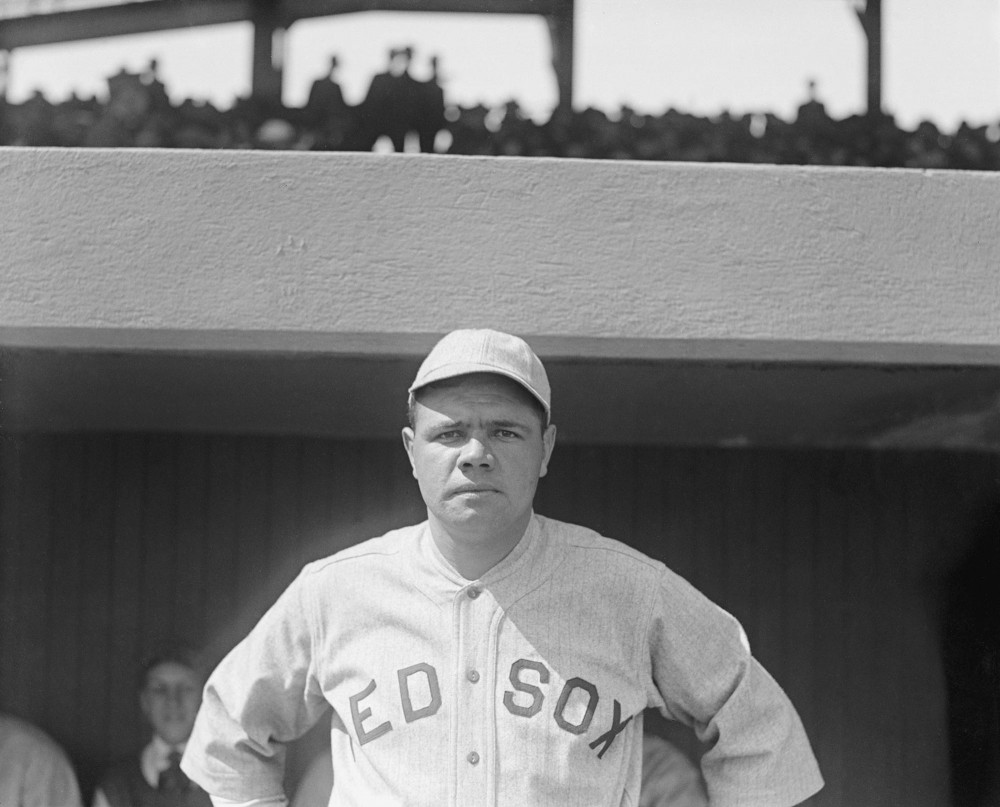What: “The Sports Show”
Where: Minneapolis Institute of Arts, 2400 S. Third Ave., Minneapolis
When: Thursday through May 13
Price: $4-8, free with student ID
Last week, after much deliberation and debate, politicians and the Minnesota Vikings revealed their plan to spend close to $1 billion building a new stadium where the Metrodome now stands. Opposition to such actions has been alive for some time and persists now that the plans have been presented. There are numerous reasons for dispute, but most are related to the cost of the project.
“The stadium debate is essentially a question of the civic value of sports,” David Little said. He is the curator of “The Sports Show,” an exhibition at the Minneapolis Institute of Arts that examines the relationship between art, sports and culture.
“The position that the show takes is that it is complicated,” Little said.
Little and the show may be officially neutral on the stadium debate itself, but there is no question of how he feels about the topic in general.
“A lot of the time, the way people talk about sports is that it is a thing outside of culture, and we make it part of culture, which is wrong,” Little said. “It is right in the midst of culture, and it has been since the late 19th century. It’s incredibly significant.”
“The Sports Show” features 175 photographs that span more than 100 years of sports, as well as 10 multimedia pieces. It is spread throughout eight rooms and includes photographs taken by Stanley Kubrick, Andy Warhol and Annie Leibovitz.
From room to room, the exhibition watches sports evolve from pastime or leisure activity into the worldwide spectacle it is today, while stopping along the way to examine how race, media and politics have played a role in sports. Photos of backyard games taken by unknown photographers slowly turn into diverse pieces showing how huge and complex sports have become in recent years.
“The images that we have of athletes now are shaped before the game,” Little said. “Working in tandem with their agents or leagues, athletes are totally in control of the image we have of them. They have become more savvy and understand the importance of an image, in selling their team and creating a relationship between the player and fans. The number of unique personas we have in sports now is so much more limited, because there are so many filters. The older images of athletes in the show are looser and rawer.”
Capturing the difference between the image of sports and actual sports is something the show does very well. In the center of the room titled “Icons,” there is a large photograph of a flexing, painfully posed Arnold Schwarzenegger at the peak of his bodybuilding career. On the wall behind it are a series of photos taken during the moment of a knockout punch. The boxers, in that helpless moment, are completely human, especially when compared to the comically artificial image of Schwarzenegger. Somehow sports makes room for both sides of this spectrum.
Little was inspired to create the show by the fact that sports is not something that art often deals with seriously.
“Once I started to look for shows that had explored sports and art, I realized there were very few,” Little said. “Art shows about sports that I had seen were more like the greatest hits of sports photography but didn’t actually say anything about art or sports. People ask me why there isn’t a picture of Michael Jordan, or the famous photo of Muhammad Ali. The show really isn’t about these star pictures, it’s about the nature of sports images. It’s about how you merge the complex ways of thinking about the game, drama and tragedy of sports and also what happens in art.”
“The Sports Show” does this beautifully. It is bewildering and fascinating the way a good art show should be, exciting and funny the way sports can be. There is a sense that there is a common ground between the two, though it’s never made explicit.
“There is a possibility with a show like this that the sports fans won’t be happy and the art fans won’t be happy,” Little said. “In a way, I’m not giving either what they want. Sports fans would probably want to see famous images of famous athletes and slick action shots from Sports Illustrated, and art fans would like a show of beautiful images about the demise of sports. I’m exaggerating, obviously, but there’s some truth to it.”
But the show is about the nature of images, almost more than it is about sports or art. And since both art and sports share a reliance on images, they can be brought together through them.








